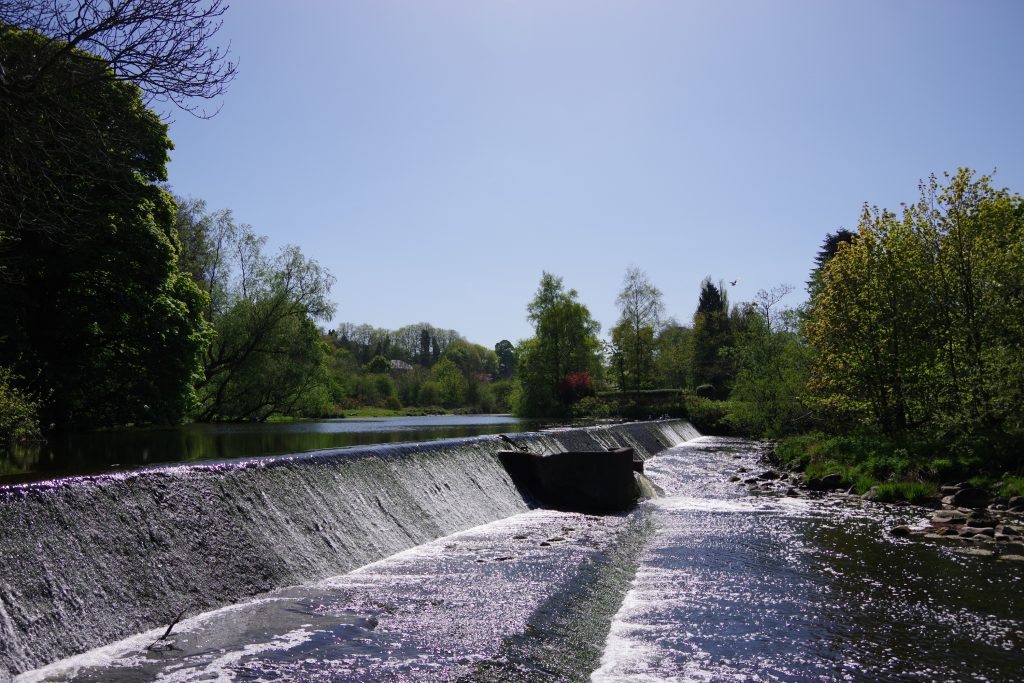Due to a rich industrial heritage, the River Almond has been adapted and manipulated to harness the power of the water for hundreds of years.
For generations, mills to process materials – such as grain, paper and iron – cropped up along the banks of the river and a shale-oil boom in the mid-19th century across Scotland’s Central Belt also required riverside infrastructure. However, the river has suffered as a result of these industrial scale changes. While they are an ingenious way to slow water and move it through a lade to turn a wheel or fill a mill pond, weirs are a barrier to fish moving up and downstream and this effects their ability to find food and reproduce.
Today, some of these weirs still stand and continue to be a barrier to fish migration. So, the River Forth Fisheries Trust have planned to make changes to alleviate those problems. Weirs in Edinburgh and Livingston will be adapted over the duration of the four year project to encourage migratory fish (such as salmon and sea trout) from the North Sea, via the Firth of Forth, up into tributaries in West Lothian which are ideal for fish reproduction. Other animals that will benefit from a clear migration route will be brown trout, lamprey and eel as well as larger predators such as dippers, kingfishers and otters which rely on the fish as a source of food.
